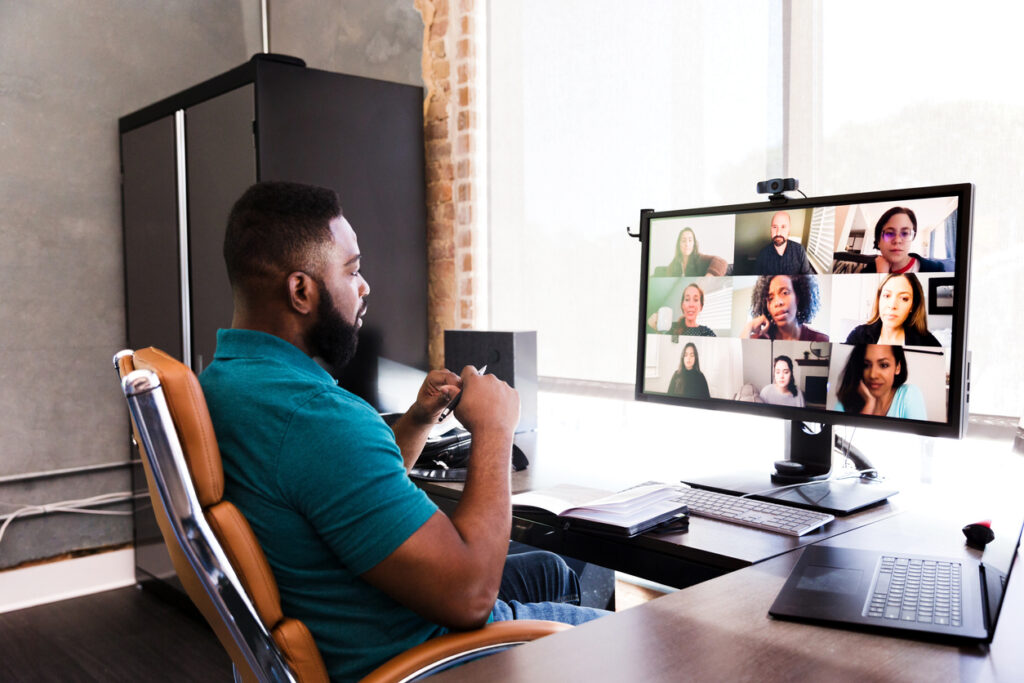As many are experiencing right now, turning a leadership development programme from conventional format to a virtual one is not an easy process. The result will be different but, if you get it right, it will be significantly better than it ever could be by expecting all participants to be trained in a corporate meeting room. In researching this article, more than 50 HR and training leaders were canvassed for their thoughts and recent experiences in virtual programme delivery, and the result is an invaluable list of ‘must haves’.
You can now go to university without leaving your bedroom. You can do A levels online with an international group of students and never need to walk to school. You can be trained and qualified in many things without moving an inch. You can get transformational coaching and counselling and even medical advice via your computer screen.
It is a more intense and demanding environment, but the result should be top quality content.
We never thought these things were possible until this year, not really. Now we know from everyone’s personal experience what is possible. It is not the same as attending a residential leadership training course, but it is something. In some ways it is better, in other ways worse, but it is definitely more efficient, cost-effective and inclusive. Quite frankly, at the moment it is all we have so it is best to consider virtual leadership development as a really good thing.
It’s not enough to want it to be good, however, it has to really work well for every participant. So, taking into account the feedback from these early days of running such programmes, what are the critical factors for success? In order to find out, we’ve just surveyed 50 HR and training professionals about their experience in this area and found that just over half of them have been delivering virtual programmes already. Here are some of their top tips.
1. Design afresh
Start the design with a clean sheet rather than look at transferring a current course online. It will take courage to leave the old format behind, but be brave and know that you can refine it later.
2. Maximise interactivity
Recreate the break-out rooms inventively – ensure you have a ‘getting to know each other’ space, even when delivering the training online so that people get a sense of the ‘coffee break’ chat. You can use polls and quizzes, for example. Ensure you have other facilitators available to assist with this. Specifically, check in with every participant. Incorporate participants’ own physical worlds into your course so they feel connected and included.
3. Manage the energy and engagement
Use bite-sized pieces to ensure you stop when energy wanes, spread the content out over an appropriate period and pick the best time in the day for focused energy. Stop and do something interactive and fun if the energy drops.
4. Focus on the core purpose
You may not be able to cover everything you would normally so prioritise the key messages. Less is more.
5. Build in pre-work and follow-up
This could include sourcing videos, reading for pre-work, or mini assessments. Offer Zoom buddying or mentoring as follow-up support.
6. Cross the bridge to ‘normal work’
Build in ways to ensure your training transfers across to real work by using future-focused online development planning and tools such as 360-degree feedback.
7. Present it as something new and not ‘just another webinar’
If you are proud and excited about it then they will be too. Consider how this special development opportunity will make a difference to them and their work.
8. Combine eLearning with virtual training
If you can, this blended approach can work very well. Joining everything up via a package and a competency or values model can be very useful.
9. Build on substance and quality
This is an opportunity to integrate the highest level of expertise you can reach virtually. Even just video clips or brief interviews of world experts can inspire and enhance the credibility of your programme.
10. Refine until you get it right
Be clear that you will not get it right first time. Ask for constructive feedback and build in time to refine and adjust. Experiment and play with the new tools and the new way.
All these factors will drive you to create content at a higher specification than for face-to-face delivery. It will require more preparation and fresh design thinking. Running the programmes will also demand more of you too. It is a more intense and demanding environment, but the result should be top quality content that will build a portfolio of inspirational development pieces available to all.
Interested in this topic? Read Leadership development: mastering leadership for the digital economy.
As many are experiencing right now, turning a leadership development programme from conventional format to a virtual one is not an easy process. The result will be different but, if you get it right, it will be significantly better than it ever could be by expecting all participants to be trained in a corporate meeting room. In researching this article, more than 50 HR and training leaders were canvassed for their thoughts and recent experiences in virtual programme delivery, and the result is an invaluable list of ‘must haves’.
You can now go to university without leaving your bedroom. You can do A levels online with an international group of students and never need to walk to school. You can be trained and qualified in many things without moving an inch. You can get transformational coaching and counselling and even medical advice via your computer screen.
It is a more intense and demanding environment, but the result should be top quality content.
We never thought these things were possible until this year, not really. Now we know from everyone’s personal experience what is possible. It is not the same as attending a residential leadership training course, but it is something. In some ways it is better, in other ways worse, but it is definitely more efficient, cost-effective and inclusive. Quite frankly, at the moment it is all we have so it is best to consider virtual leadership development as a really good thing.
It’s not enough to want it to be good, however, it has to really work well for every participant. So, taking into account the feedback from these early days of running such programmes, what are the critical factors for success? In order to find out, we’ve just surveyed 50 HR and training professionals about their experience in this area and found that just over half of them have been delivering virtual programmes already. Here are some of their top tips.
1. Design afresh
Start the design with a clean sheet rather than look at transferring a current course online. It will take courage to leave the old format behind, but be brave and know that you can refine it later.
2. Maximise interactivity
Recreate the break-out rooms inventively – ensure you have a ‘getting to know each other’ space, even when delivering the training online so that people get a sense of the ‘coffee break’ chat. You can use polls and quizzes, for example. Ensure you have other facilitators available to assist with this. Specifically, check in with every participant. Incorporate participants’ own physical worlds into your course so they feel connected and included.
3. Manage the energy and engagement
Use bite-sized pieces to ensure you stop when energy wanes, spread the content out over an appropriate period and pick the best time in the day for focused energy. Stop and do something interactive and fun if the energy drops.
4. Focus on the core purpose
You may not be able to cover everything you would normally so prioritise the key messages. Less is more.
5. Build in pre-work and follow-up
This could include sourcing videos, reading for pre-work, or mini assessments. Offer Zoom buddying or mentoring as follow-up support.
6. Cross the bridge to 'normal work'
Build in ways to ensure your training transfers across to real work by using future-focused online development planning and tools such as 360-degree feedback.
7. Present it as something new and not ‘just another webinar’
If you are proud and excited about it then they will be too. Consider how this special development opportunity will make a difference to them and their work.
8. Combine eLearning with virtual training
If you can, this blended approach can work very well. Joining everything up via a package and a competency or values model can be very useful.
9. Build on substance and quality
This is an opportunity to integrate the highest level of expertise you can reach virtually. Even just video clips or brief interviews of world experts can inspire and enhance the credibility of your programme.
10. Refine until you get it right
Be clear that you will not get it right first time. Ask for constructive feedback and build in time to refine and adjust. Experiment and play with the new tools and the new way.
All these factors will drive you to create content at a higher specification than for face-to-face delivery. It will require more preparation and fresh design thinking. Running the programmes will also demand more of you too. It is a more intense and demanding environment, but the result should be top quality content that will build a portfolio of inspirational development pieces available to all.
Interested in this topic? Read Leadership development: mastering leadership for the digital economy.








